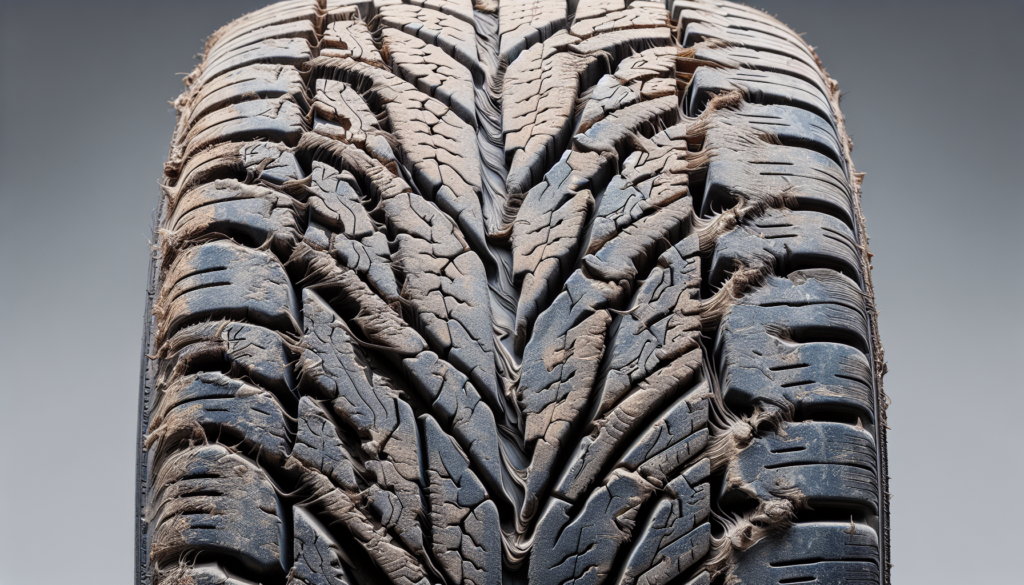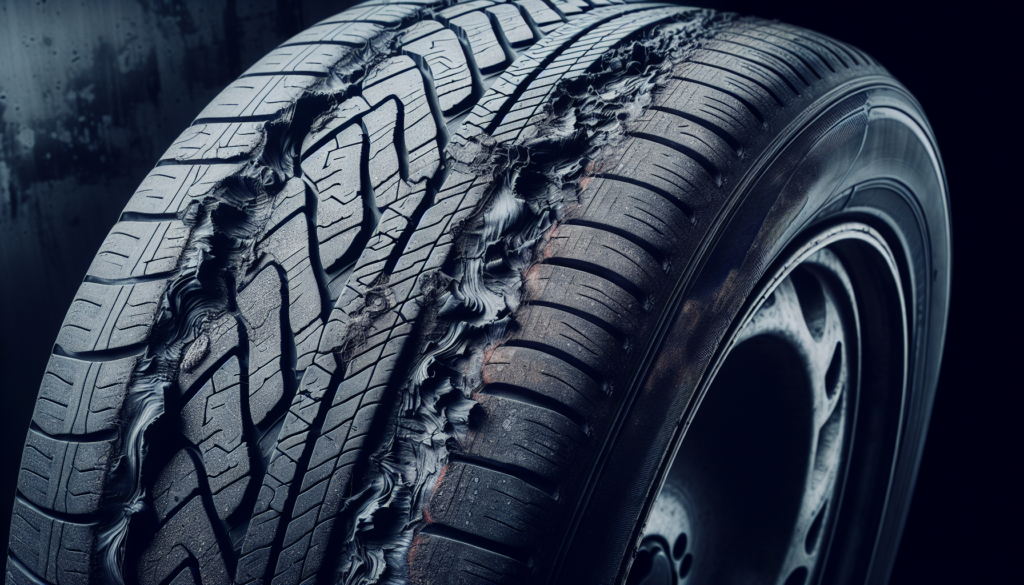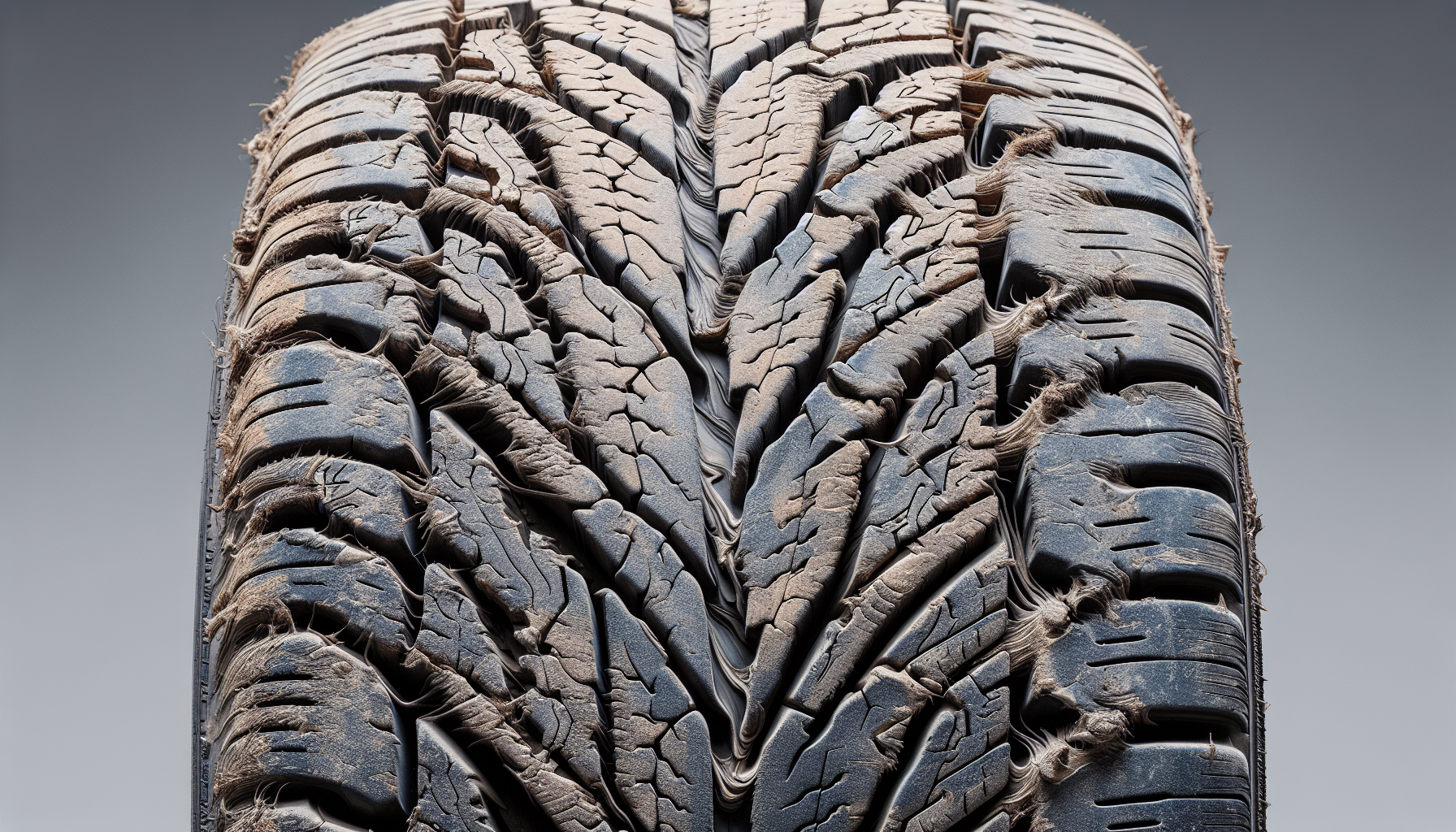Have you ever wondered if misaligned wheels can cause your tires to wear unevenly? Well, the answer is a resounding yes! When your wheels are not properly aligned, it can result in tires that wear out faster on one side compared to the other. But fear not, understanding the impact of misaligned wheels on your tire wear can help you take the necessary steps to ensure a smoother and safer ride. So let’s delve into the world of wheel alignment and learn how to keep your tires in optimal condition.
What is wheel misalignment?
Definition of wheel misalignment
Wheel misalignment refers to the condition when the wheels of a vehicle are not aligned properly, causing them to point in different directions. In an ideal alignment, all four wheels should be parallel and facing straight ahead. However, due to various factors, such as bumps, potholes, or general wear and tear, the wheels can become misaligned, leading to potential issues with tire wear, fuel efficiency, and steering.
Causes of wheel misalignment
There are several factors that can contribute to wheel misalignment. One common cause is hitting a pothole or a curb, which can jolt the suspension system and knock the wheels out of alignment. Regular wear and tear can also affect the alignment over time. Additionally, accidents or collisions can significantly impact the alignment of the wheels.
Types of wheel misalignment
There are different types of wheel misalignment that can occur, including:
-
Camber misalignment: This occurs when the wheels tilt inward or outward when viewed from the front of the vehicle. If the top of the wheel tilts inward, it is called negative camber, and if it tilts outward, it is called positive camber.
-
Toe misalignment: Toe misalignment refers to the wheels pointing inward or outward when viewed from above the vehicle. If the wheels point inward, it is known as toe-in, and if they point outward, it is called toe-out.
-
Caster misalignment: Caster misalignment occurs when the steering axis is tilted either forward or backward. This misalignment affects the stability and steering of the vehicle.
-
Thrust angle misalignment: Thrust angle misalignment happens when the rear axle deviates from its perpendicular position to the vehicle’s center line. This misalignment can cause the vehicle to drift or pull to one side.
Effects of misaligned wheels
Uneven tire wear
One of the most common and noticeable effects of misaligned wheels is uneven tire wear. When the wheels are not properly aligned, certain parts of the tire tread bear more weight and experience greater friction than others. This leads to uneven wear patterns on the tires, reducing their lifespan and potentially compromising safety.
Reduced fuel efficiency
Misaligned wheels can also result in reduced fuel efficiency. When the wheels are not aligned correctly, it causes increased rolling resistance. This means that the engine has to work harder to move the vehicle, leading to increased fuel consumption. Over time, this can significantly impact your gas mileage and increase your expenses at the pump.
Steering and handling issues
Another effect of misaligned wheels is the impact on the vehicle’s steering and handling. When the wheels are not aligned, it can cause the vehicle to pull to one side, making it difficult to keep a straight line. This affects the overall stability and control of the vehicle, potentially compromising your safety on the road.

Uneven tire wear
Explanation of uneven tire wear
Uneven tire wear occurs when different parts of the tire tread wear down at different rates. This is a common issue caused by wheel misalignment. When the wheels are misaligned, certain areas of the tire come into contact with the road more than others, resulting in uneven wear patterns.
Signs of uneven tire wear
There are several signs that indicate uneven tire wear:
-
Feathering: If you run your hand over the tire tread and it feels smooth in one direction and rough in the other, it indicates feathering, which is a common sign of misalignment.
-
Cupping: Cupping appears as scalloped or cup-shaped indentations on the tire tread. It is often caused by bouncing or a choppy ride, which can be a result of misaligned wheels.
-
Wear on one side: Uneven wear on one side of the tire compared to the other side is a clear indicator of misalignment.
Causes of uneven tire wear
Misaligned wheels are a leading cause of uneven tire wear. When the wheels do not point in the same direction or have incorrect angles, specific parts of the tire will experience more friction, resulting in uneven wear. Additionally, driving with low tire pressure or worn-out suspension components can contribute to uneven tire wear.
Causes of uneven tire wear
Camber misalignment
Camber misalignment occurs when the wheels tilt inward or outward when viewed from the front of the vehicle. If the top of the wheel tilts inward, it is called negative camber, and if it tilts outward, it is called positive camber. Camber misalignment can result from worn-out or damaged suspension components, collisions, or improper installation.
Toe misalignment
Toe misalignment refers to the wheels pointing inward or outward when viewed from above the vehicle. If the wheels point inward, it is known as toe-in, and if they point outward, it is called toe-out. Toe misalignment can be caused by worn-out steering or suspension components, improper adjustment during previous alignments, or impacts from potholes or curbs.
Caster misalignment
Caster misalignment occurs when the steering axis is tilted either forward or backward. This misalignment affects the stability and steering of the vehicle. Caster misalignment can be caused by worn-out or damaged suspension components, improper installation, or collision damage.
Thrust angle misalignment
Thrust angle misalignment happens when the rear axle deviates from its perpendicular position to the vehicle’s center line. This misalignment can cause the vehicle to drift or pull to one side. Thrust angle misalignment can be caused by accidents, collisions, worn-out suspension components, or improper adjustments during previous alignments.

Diagnosing wheel misalignment
Visual inspection
A visual inspection of the tires and wheels can provide some initial clues about wheel misalignment. Look for signs of uneven tire wear, such as feathering, cupping, or uneven tread depth. Inspect the wheels to see if they appear crooked or not aligned parallel to each other.
Tire wear pattern
Examine the tread of the tires to identify any specific wear patterns. Uneven wear on one side of the tire or in specific areas can indicate misalignment. If certain areas of the tire appear more worn than others, it suggests that the wheels are not evenly distributing weight and are misaligned.
Steering wheel position
When driving on a straight, level road, observe the position of the steering wheel. If it is not centered and requires constant correction to keep the vehicle straight, it could be a sign of wheel misalignment.
Drifting or pulling
Pay attention to how the vehicle behaves while driving. If the vehicle tends to drift or pull to one side, particularly when driving on a flat road, it indicates the possibility of misaligned wheels.
Effects of camber misalignment
Explanation of camber misalignment
Camber misalignment refers to the tilting of the wheels inward or outward when viewed from the front of the vehicle. Negative camber occurs when the top of the wheel tilts inward, while positive camber refers to the top of the wheel tilting outward.
Signs and symptoms
Signs and symptoms of camber misalignment include:
-
Uneven tire wear: Camber misalignment often leads to uneven tire wear, with excessive wear on the inner or outer edges of the tire tread.
-
Vehicle pulls to one side: When wheels have significant positive or negative camber, it can cause the vehicle to pull to one side, making it difficult to drive straight.
-
Vibration or steering instability: Camber misalignment can result in vibration or steering instability, especially at higher speeds.
Impact on tire wear
Camber misalignment has a significant impact on tire wear. When the camber angle is not properly adjusted, it causes uneven distribution of weight on the tire tread. This results in excessive wear on either the inner or outer edges of the tire, significantly reducing its lifespan and potentially compromising safety.

Effects of toe misalignment
Explanation of toe misalignment
Toe misalignment occurs when the wheels point inward or outward when viewed from above the vehicle. Toe-in refers to the wheels pointing inward, while toe-out indicates the wheels pointing outward.
Signs and symptoms
Signs and symptoms of toe misalignment include:
-
Uneven tire wear: Improper toe alignment leads to uneven tire wear, where the inner or outer edges of the tire tread wear more quickly than the rest.
-
Increased tire scrubbing: Toe misalignment can cause the tires to scrub against the road, resulting in excessive friction and premature wear.
-
Steering instability: When the toe alignment is off, it can cause the vehicle to feel unstable while steering, leading to difficulty in keeping the vehicle on a straight path.
Impact on tire wear
Toe misalignment has a direct impact on tire wear. When the wheels are not aligned properly, the tires do not roll parallel to each other. As a result, they scrub against the road surface, causing accelerated wear on the inner or outer edges of the tire tread. This significantly reduces the lifespan of the tires and can lead to costly replacements.
Effects of caster misalignment
Explanation of caster misalignment
Caster misalignment occurs when the steering axis is tilted either forward or backward. It affects the stability and steering of the vehicle.
Signs and symptoms
Signs and symptoms of caster misalignment include:
-
Vehicle pulling: Caster misalignment can cause the vehicle to pull to one side, making it difficult to keep a straight line while driving.
-
Steering instability: Incorrect caster alignment can result in steering instability, where the vehicle feels less responsive or tends to wander on the road.
-
Uneven tire wear: Caster misalignment can cause uneven tire wear, with excessive wear on one side of the tire tread.
Impact on tire wear
Caster misalignment affects the stability of the vehicle, which can indirectly impact tire wear. If the caster angle is not properly adjusted, it can cause uneven distribution of weight on the tires, leading to excessive wear on one side. Additionally, it can contribute to other forms of misalignment, such as camber or toe misalignment, further accelerating tire wear.

Effects of thrust angle misalignment
Explanation of thrust angle misalignment
Thrust angle misalignment occurs when the rear axle deviates from its perpendicular position to the vehicle’s center line. It can cause the vehicle to drift or pull to one side.
Signs and symptoms
Signs and symptoms of thrust angle misalignment include:
-
Drifting or pulling: When the thrust angle is misaligned, the vehicle may drift or pull to one side, even when the steering wheel is centered.
-
Uneven tire wear: Thrust angle misalignment can result in uneven tire wear, specifically on the rear tires.
-
Steering instability: Misaligned thrust angle can affect the overall stability and steering of the vehicle, leading to a less-controlled driving experience.
Impact on tire wear
Thrust angle misalignment can cause uneven tire wear on the rear tires. When the rear axle is not properly aligned with the vehicle’s center line, it causes the tires to roll in a non-parallel manner. As a result, excessive wear may occur on one side of the rear tires, reducing their lifespan and potentially compromising vehicle safety.
Preventing and correcting wheel misalignment
Regular wheel alignments
To prevent wheel misalignment, it is essential to schedule regular wheel alignments. Regular alignments help ensure that the wheels are properly aligned and reduce the risk of uneven tire wear and other alignment-related issues. Consult your vehicle’s owner’s manual or consult with a professional to determine the recommended frequency for wheel alignments.
Driving habits and road conditions
Driving habits and road conditions play a role in preventing wheel misalignment. Avoid hitting potholes or curbs whenever possible, as these can cause significant jolts to the suspension system and knock the wheels out of alignment. Additionally, practice defensive driving techniques to minimize the risk of accidents or collisions that can impact wheel alignment.
Professional alignment services
If you suspect or notice signs of wheel misalignment, it is crucial to seek professional alignment services. Professional technicians have the expertise and equipment to accurately diagnose and correct wheel misalignment. They can measure and adjust the angles of the wheels to ensure proper alignment, ultimately improving tire wear, fuel efficiency, and overall vehicle performance.
In conclusion, misaligned wheels can indeed lead to uneven tire wear and numerous other issues. Understanding the causes and effects of wheel misalignment is essential to maintain the longevity and safety of your vehicle. Regular wheel alignments, responsible driving habits, and seeking professional alignment services when necessary are key to preventing and correcting wheel misalignment. By taking these preventive measures, you can ensure that your tires wear evenly, improve fuel efficiency, and enjoy a smoother and safer driving experience.


